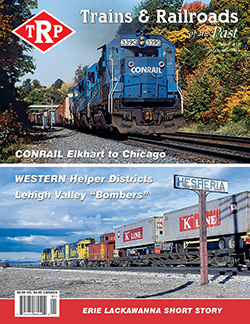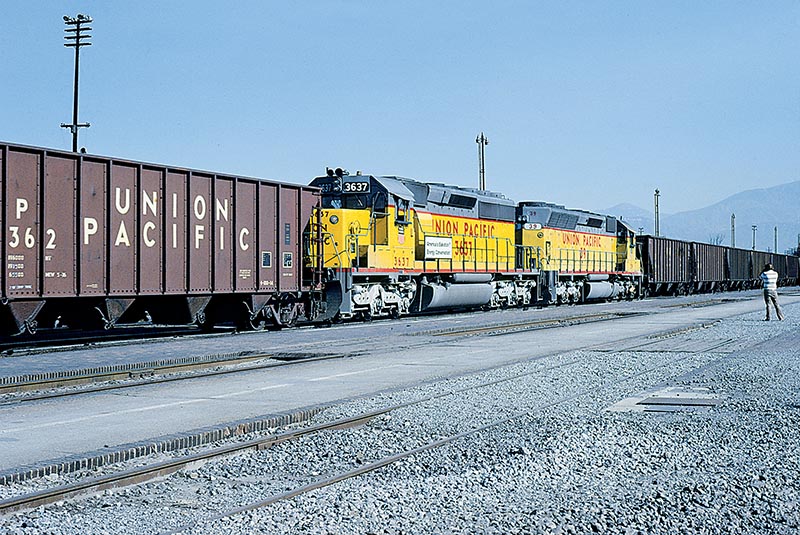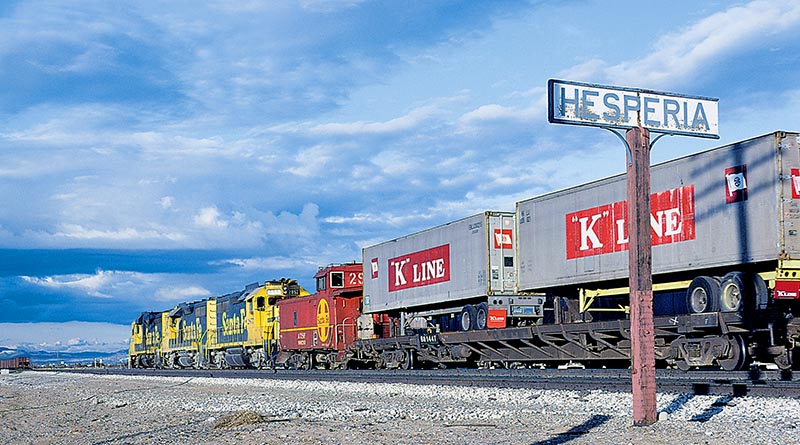 By Carl Graves/photos as noted
By Carl Graves/photos as noted
Do you remember your first time? I recall the event with a mix-ture of excitement, pleasure, and awe. I’m not referring to a first romantic encounter, but rather the first time I saw a helper engine assisting a train! I still vividly recall the time when in 1971, at age 20, I followed white helpers on a long Kansas City Southern freight grinding up the Rich Mountain grade along the Oklahoma-Arkansas border. I thought, “Two sets of engines, what a bonus!” My friend Steve Jessup, who grew up in Atascadero, Calif., along U.S. Route 101, remembers Southern Pacific gray-and-scarlet colored helper engines assisting a struggling freight train on Cuesta grade between Santa Margarita and San Luis Obispo. He was in elementary school, the year sometime between 1966 and 1969.
There’s something electrifying about helper operations. They are often dramatic events because these engines frequently travel through beautiful scenery, with heavy trains crawling up steep grades… motors roaring, straining and smoking as they slowly fight gravity. Furthermore, helpers provide additional angles for the photographer, who can get shots of these engines on the rear or in the middle of the train or both. Since the age of steam, helpers have assisted freights in many parts of North American, usually, but not always, in mountainous terrain.

In December 1980, SD40-2 3637 and SD45 39 have teamed up as mid-train helpers on a coal train. Ironically, the 3637 was part of a group of SD40-2’s delivered to the UP in the late 1970s that necessitated the renumbering of their SD45 fleet, the 39 had previously worn 3639. Photo by James R. Doughty, collection of Kevin EuDaly
What follows is not a comprehensive account of past and present U.S. and Canadian helper districts, but rather a celebration and illustration of certain freight helper operations and locomotives (manned and unmanned), with special emphasis on territory west of Chicago, in the 1960s, ‘70s and ‘80s, along with a brief update on the evolution of integrated distributed power (IDP). For decades, whether on a short, steep grade or a longer climb, pushers and mid-train engines have allowed many heavy trains to keep moving, alluding to the Joe Cocker song, “With a little help from my friends.”
Manned Helper Operations
Improved operating efficiency was the goal of helper districts and locomotives. Rather than loading up a train with extra engines for the tough spots of the entire run, much of it over easy grades, rail-road planners decided that the crew could get by with fewer locomo-tives for most of the journey and then temporarily add engines in the middle or rear of a train (or both) to climb an especially challenging grade. A related advantage of this strategy was reduced crew costs because, instead of running more and shorter trains requiring more men, the railroad could run fewer trains with more cars, since these lengthy drags would get temporary assistance from helper engines.
From the Southern Pacific route over Donner Pass to the Pennsy line around Horseshoe Curve, extra crews and locomotives provided the augmented muscle to get the job done. For example, Great Northern helpers based in Essex, Mont., assisted trains going over Marias Pass, while their counterparts based in La Grande, Ore., allowed Union Pacific trains to conquer the Blue Mountains. Prior to the 1953 completion of a third track at a lower grade, the Union Pacific had twenty helper engine movements a day over Sherman Hill in Wyoming! Until the 1970s, the Santa Fe used manned helpers based in Waynoka, Okla., on westbounds going up nearby Curtis Hill, which had over ten miles of .9 and 1.0 percent grades…



